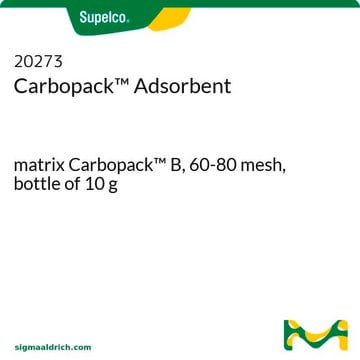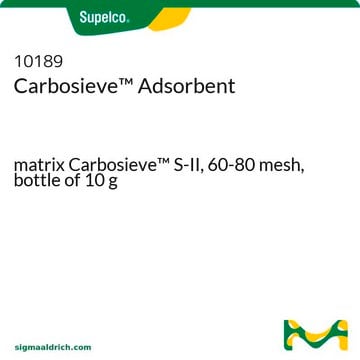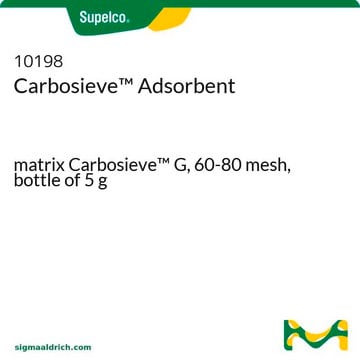28274-U
Carbosieve SIII Thermal Desorption Tube
stainless steel, O.D. x I.D. x L 6 mm × 4 mm × 7 in., preconditioned, pkg of 1 ea
Synonym(e):
Carbosieve S-III EDELSTAHL TD-RÖHRCHEN, 7″, FÜR GERSTEL
About This Item
Empfohlene Produkte
product name
Carbosieve SIII, stainless steel TD tube, O.D. × I.D. × L 6 mm × 4 mm × 7 in., preconditioned, pkg of 1 ea
Materialien
stainless steel TD tube
Agentur
EPA TO-2
Beschreibung
Sealed with TDS³ Storage Container
Produktlinie
Carbosieve
Leistungsmerkmale
preconditioned
Verpackung
pkg of 1 ea
Grünere Alternativprodukt-Eigenschaften
Waste Prevention
Safer Solvents and Auxiliaries
Learn more about the Principles of Green Chemistry.
sustainability
Greener Alternative Product
Methode(n)
active air sampling: suitable
AD × ID × L
6 mm × 4 mm × 7 in.
Matrix
Carbosieve S-III carbon molecular sieve (CMS)
Anwendung(en)
air monitoring
environmental
industrial hygiene
Kompatibilität
for use with Gerstel® TDS A & TDS 2
Suchen Sie nach ähnlichen Produkten? Aufrufen Leitfaden zum Produktvergleich
Allgemeine Beschreibung
Rechtliche Hinweise
Lagerklassenschlüssel
11 - Combustible Solids
Flammpunkt (°F)
Not applicable
Flammpunkt (°C)
Not applicable
Choose from one of the most recent versions:
Analysenzertifikate (COA)
Sorry, we don't have COAs for this product available online at this time.
If you need assistance, please contact Kundensupport
Besitzen Sie dieses Produkt bereits?
In der Dokumentenbibliothek finden Sie die Dokumentation zu den Produkten, die Sie kürzlich erworben haben.
Unser Team von Wissenschaftlern verfügt über Erfahrung in allen Forschungsbereichen einschließlich Life Science, Materialwissenschaften, chemischer Synthese, Chromatographie, Analytik und vielen mehr..
Setzen Sie sich mit dem technischen Dienst in Verbindung.






